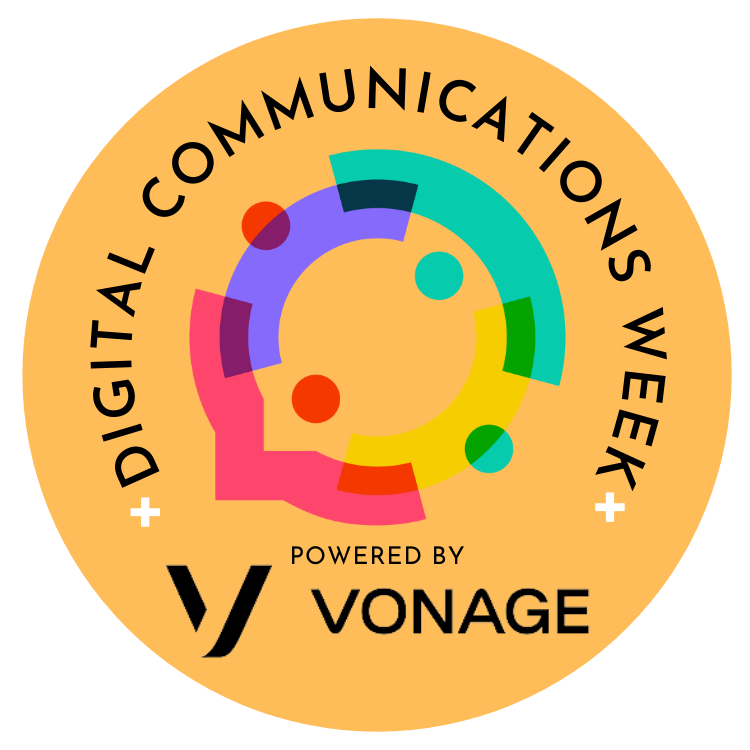We Are At A Huge Market-Wide Communications Revolution
Regardless of how organisations engage customers, the bar is being raised in the age of digital business transformation. Customers now expect organisations to flexibly respond to inquiries, no matter what medium is employed. In this interview, Mohammad Radaydeh, Country Manager META at Vonage, discusses how integrating channels helps deliver seamless conversations and why organisations that […]
Topics

Regardless of how organisations engage customers, the bar is being raised in the age of digital business transformation. Customers now expect organisations to flexibly respond to inquiries, no matter what medium is employed.
In this interview, Mohammad Radaydeh, Country Manager META at Vonage, discusses how integrating channels helps deliver seamless conversations and why organisations that meet consumers on their communications channel of choice will emerge stronger than before.
how integrating channels helps deliver seamless conversations and why organisations that meet consumers on their communications channel of choice will emerge stronger than before.
Excerpts from the interview:
How do Unified Communications tools empower businesses?
The nature of communications has fundamentally changed, and unified communications tools such as Vonage Business Communications (VBC) offer businesses a global, unified solution that powers collaboration and teamwork while integrating seamlessly with existing workflows, channels, programmable tools and contact centres. With a focus on omnichannel integrated communications, Vonage is driving solutions that enable new ways of communicating and creating personalised customer experiences.
With more companies adopting a hybrid work model, which key features will become vital?
With the pandemic accelerating home and remote working trends exponentially, we’re seeing a substantial change in all markets. Consumer preference for emerging channels including video, social messaging and chatbots continue to grow markedly in banking, finance and insurance, education, healthcare, retail, and transportation and logistics. These technologies will make all the difference in delivering a superior and frictionless customer experience.
Additionally, businesses can now employ new communications technologies that allow them the flexibility to embed programmable capabilities — voice, video, messaging and verification — directly into existing applications and workflows armed with insights from these channels. This means that they can meet customers on their preferred communications channels, whatever and wherever they might be, making sure their every need is catered to.
In the Middle East, global service providers are aiding organisations with cloud transition and IT optimisation. How important is it to partner with clients to scale new digital ventures and co-invest in a transformation process?
Vonage’s vision is to accelerate the world’s ability to connect through technology and innovation. We also have a customer-first culture, committed to partnering with customers to ensure they receive the best service, support and technology they need to meet the new, modern workplace.
Owning our tech stack from unified communications, contact centres and a communications platform as a service, we are uniquely placed to help businesses improve digital engagement with their customers. And in doing so, enhance both customer and employee experience to create greater satisfaction and brand loyalty. Vonage is uniquely positioned to enable businesses in the Middle East and worldwide to succeed in an increasingly customer experience-driven economy.
How do you integrate the array of preferred channels to deliver seamless conversations?
We are at the beginning of a huge market-wide communications revolution. If there was ever a question that businesses needed to digitally transform not only to survive but thrive, COVID-19 eliminated any doubt. This is a secular change in how business gets done. Last year, we researched to understand changing consumer preferences and behaviours to help organisations better engage with their customers to drive better experiences. The survey underscored that it is now fundamental for companies to stay connected to employees and customers from anywhere – through whatever channel they choose – video, voice, messaging, and chat.
To connect with consumers today, businesses must turn to less traditional channels and employ technology, such as APIs, that allow them the flexibility to embed programmable capabilities – voice, video, messaging and verification – directly into existing applications and workflows.
Consumer preference for video chat has grown in banking, finance and insurance, education, healthcare, retail, and transportation and logistics. Emerging communications channels that saw an increase in preference include voice calls and messaging via social messaging apps, and chatbots.
Armed with these insights, businesses can build a winning customer experience that meets customers on their preferred communications channels, whatever and wherever they might be. Organisations must always be agile and ready to adapt to changes in the market, but 2020 made the call for agility even louder. Now, organisations across all industries must successfully adapt to the new normal through the ability to deliver goods and services remotely.
While this remote delivery of services is crucial to business survival today, that ability will mean little if the experience isn’t frictionless, seamless and embedded into the applications customers are already comfortable using.
Organisations that meet consumers on their communications channel of choice, at the times they prefer and while limiting frustrations may emerge from this turbulent era stronger than before.
Also Read: Leave Post Call Analysis To AI
Tell us how a CPaaS provider improves the success of a customer engagement API project.
The ability to innovate and meet customers on their preferred communications channels is the value the Vonage platform brings to organisations worldwide. Through a unique and powerful combination of unified communications, contact centres and communications APIs, the Vonage delivers both the power and the flexibility today’s customers need to disrupt their industries and enables the type of business continuity, remote work, and remote delivery of services that are now essential.
How do you orchestrate multichannel message delivery with failover automation?
Businesses usually understand which text-based mediums their customers and employees prefer, but bleedover is sometimes necessary. This situation makes a failover system for communications appealing in various professional, support, and sales contexts. Though contacting customers or colleagues through multiple channels simultaneously is a serious messaging faux pas, a tool that automatically messages a secondary medium at a set interval can be critical for businesses looking to deliver important information.
Logistics companies, for instance, have increasingly turned to direct communication with customers — often automated or anonymised through proprietary, API-driven mobile applications — to ensure everyone knows the package is en route. But what does a last-miler do when they reach out to a customer’s highest-engagement communication medium and get no response? This situation is where the value of a failover system for messaging is plain to see. After a set interval, the do-you-have-it message automatically defaults to a second form of contact on the customer’s file, such as an IM handle or email. If the customer is at the computer, they get a second chance to confirm to the company that the package is in the right hands.
There are a million use cases like these, and they all stem from the same high-level idea that communication works harder for an office when it can be configured to work up the chain. Failover provides that capability, streamlining customer- and internal-facing comms without the irritations of multi-format blast messaging — a small difference on paper with big potential in practice.
Also Read: Creating The Best CX Through Omnichannel Marketing
How are you addressing the challenges of customer data protection and compliance?
Vonage is focused on providing customers with the tools to both improve internal collaboration among employees and enhance external communications with their customers for deeper engagement and more meaningful relationships through an ever-evolving suite of cloud-based communications services. And with a communications and technological landscape that is ever-shifting, cloud-based communications solutions represent a new frontier for a wide range of businesses.
To make sure that our business cloud communications solutions are helping our customers to become more productive, more mobile, more flexible, more profitable and more security-focused than ever before, we are committed to putting a variety of safeguards in place with compliance and the protection of their company and customer data in mind.
Cybersecurity and cloud security are baked into the culture of our business. We are committed to protecting Vonage’s information and cybersecurity management programmes to meet the needs and expectations of our customers. Vonage provides industry-leading information and cybersecurity measures designed from the bottom up for a cloud-based environment without any compromise to security or cloud reliability. This includes informational guidance and enablement for compliance and regulation guidelines such as HIPAA, HITECH and HITRUST to address privacy regulatory requirements for our healthcare customers, PCI for protection of financial data and global privacy standards through General Data Protection Regulation (GDPR).
We are dedicated to serving our customers not only to guarantee their success through solutions to drive better business outcomes but also to protect their data and private company information and that of their customers. We will continue to implement and look for new ways of protecting our customers and their company data.






